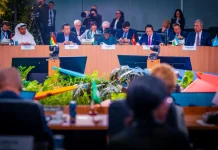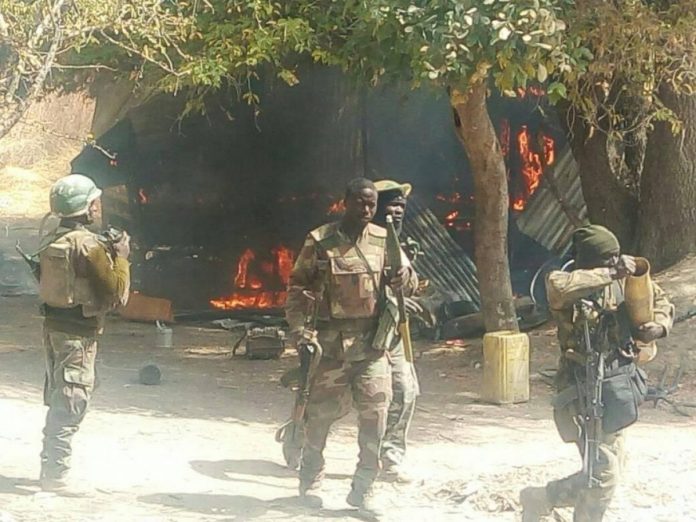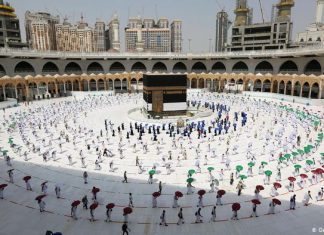Between 2015 and 2020, terrorist groups Boko Haram and the Islamic State for West African Province (ISWAP) launched 500 attacks on military bases and formations of the Multinational Joint Task Force (MNJTF), according to a research paper prepared for the European Peace Facility (EPF), a European Union project for peace support operations around the world.
Mr Eric Berman, a Researcher and Director of the S4 Initiative (Safeguarding Security Sector Stockpiles) in Borex, Switzerland, presented a paper titled: “The Management of Lethal Materiel in Conflict Settings: Existing Challenges and Opportunities for the European Peace Facility,” which stated that lethal weapons, including small and light arms seized from military bases during terrorist attacks, posed a challenge to the European Peace Facility.
While the report blamed corruption and low morale for the loss of equipment, the Defence Headquarters (DHQ) has stated that the Nigerian Armed Forces are winning the war against insurgency in all theaters of operations, including the country’s North East and North West regions.
Maj. Gen. Olufemi Sawyerr, the Defence Spokesman, said the fact that thousands of insurgents were surrendering with their families and laying down their arms was proof that the government was winning the insurgency war, and that the act of surrender was also a sign of national victory.
However, according to the research paper, 2,368 “uniformed personnel fatalities were recorded” between 2015 and 2020, with the insurgents launching 5
Read Also: Onyema inspires confidence in Super Eagles by promising N20 million if they beat Cape Verde
According to the breakdown, Nigeria had 1,952 fatalities, Chad had 217, Niger had 132, and Cameroon had 67.
Nigeria also lost 134 personnel in 2015, 157 in 2016, 171 in 2017, 425 in 2018, 642 in 2019, and 423 in 2020, according to the figures. Chad lost one soldier in 2015, four in 2016, nine in 2017, zero in 2018, 34 in 2019, and 169 in 2020, according to the report.
In Niger, however, 14, 2015; 57, 2016; zero, 2017; 19, 2019; 22, 2019; and 20, 2020 were all recorded. In 2015, 36 people died in Cameroon, nine in 2016, one in 2017, zero in 2018, 21 in 2019, and zero in 2020.
The four troop-contributing member nations – Nigeria, Chad, Niger, and Cameroon – lost 185 personnel in 2015, 227 in 2016, 181 in 2017, 444, 2018, 719, 2019, and 612 in 2020, according to annual totals.
“Official data on security sector personnel attacks is difficult to come by, but reports suggest that over 2,000 uniformed security sector personnel have died as a result of the conflict.
“As alarming as these figures are, they likely understate the true scale and scope of the security personnel losses suffered by the four Lake Chad Basin countries.
“A memorial to fallen comrades has been inscribed with the names of over 1,300 soldiers since 2013 at the headquarters of the Nigerian military’s operations in Northeast Nigeria,” it said.
According to the report, “an estimated 600 soldiers died in Boko Haram attacks in a six-month period in 2018 alone,” according to research authorities.
In 2014 and 2015, more than 100 Cameroonian soldiers died in Boko Haram attacks, while three separate attacks on police targets in N’Djamena in June 2015 resulted in more than 100 casualties, including dozens of deaths, many of whom were police officers.
Read Also: NYSC signs MoU to include corps members on NHIS programme
Insurgents lose weapons for a variety of reasons, according to the report.
“As a direct result of these attacks, a significant amount of materiel has been lost. Several tins of linked cartridges totaling hundreds of rounds of ammunition are frequently transported by a gun truck equipped with a machine gun. Large quantities of weaponry kept at the base as reserves are occasionally taken from military positions attacked by the insurgents.
Crew-served weaponry such as machine guns, mortars, and towed artillery are carted away when a base is overrun, but “a lot of that materiel is in good enough condition to be of use to the militants,” it said.
“Materiel check points, forward operating bases, “Super Camps,” and sector headquarters are likely dwarfed by contingent-owned equipment seized from regional security forces,” it said.
The research paper also cited “insufficient quality and quantity of both lethal and non-lethal materiel for the security sector,” as well as “tanks only firing twice, armoured personnel carriers running for 10 to 15 minutes from boots to tanks” as reasons for the loss of personnel and materiel, and has compiled a number of soldiers’ grievances about insufficient body armour minutes before a battle.
“These long-standing issues summarize the scope of the problem in Nigeria, and “wide-ranging concerns are not based on anecdotal accounts,” according to the report. “A similar situation affected Cameroonian security forces’ early efforts against Boko Haram,” it said, citing research authorities.
“Corruption goes a long way to explaining why equipment is lacking,” Berman said, citing research works. Implicit accusations of the military purposefully prolonging the conflict for their own ends are common in Nigerian society, and current President Muhammadu Buhari acknowledged this, promising to combat it as a central part of his fight against entrenched military corruption, which includes extortion at checkpoints during his first presidential campaign in 2015.
Read Also: In Osun, the NSCDC will crack down on illegal private guards
“However, the country faces a massive challenge, and progress has been slow and uneven. Malfeasance in the defense sector isn’t just a Nigerian problem. It is a problem in many parts of the world, including the sub-region,” the report stated.
The regional response to the “Boko Haram” conflict, according to the report, highlighted both the need for EU assistance—for example, through the provision of lethal materiel and training through the European Peace Facility (EPF)—and the need to assess the risks inherent in any kind of engagement.
“In the Lake Chad region, the loss of uniformed personnel and lethal materiel from state stockpiles is astonishingly high. Several times as many uniformed personnel serving in and alongside the Multinational Joint Task Force were killed due to “malicious acts” in six years (between 2015 and 2020) than those who have served in UN peacekeeping operations for more than 70 years.
“According to reports, Boko Haram factions have taken control of contingent-owned equipment (COE), which includes a variety of heavy weapon systems. Boko Haram took control of some armored vehicles and towed artillery from EU member states. Small arms and light weapons, many of which were also manufactured in the EU, have “sustained the insurgency for over a decade,” according to Berman.
As a result, the report recommended that the EU continue to work with the African Union (AU) and the Economic Community of West African States (ECOWAS) to address the issues raised in the report.
Read Also: FCT reports 597 new COVID-19 infections and 17 deaths in 13 states.
Despite this, Maj. Gen Sawyerr, the defence spokesman, told that the Nigerian Armed Forces were winning the war against insurgency and armed banditry, despite his dissatisfaction with the report.
“In the North East and North West, we are winning the war, and terrorists are surrendering in large numbers. Why is it that now that we are clearly winning the war, a report like this appears to be attempting to drag us back? We are winning the war, and thousands of them, along with their families, are surrendering. “What else are we talking about?” he inquired.
As of the time of filing this report, the MNJTF’s Director of Public Communication, Col Muhammed Dole, had yet to respond to questions about the report scheduled for presentation today.
Join Television Nigerian Whatsapp Now
Join Television Nigerian Facebook Now
Join Television Nigerian Twitter Now
Join Television Nigerian YouTUbe Now






















